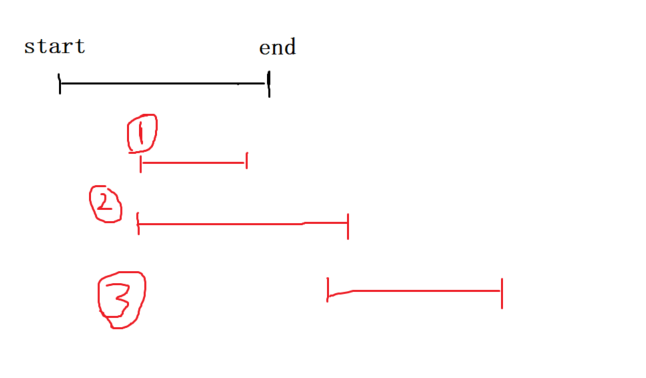算法分析
-
1、将每个区间按左端点从小到大进行排序
-
2、如图所示,可分3种情况
- 情况一:当前区间完全被上一区间覆盖,直接跳过
- 情况二:将当前区间的右端点更新为上一区间的右端点,达到区间延长的效果
- 情况三:当前区间的左端点严格大于上一区间的右端点,则表示该区间不能合并,更新区间且count++

时间复杂度 O(nlogn)
Java 代码
import java.util.*;
public class Main{
public static void main(String[] args) {
List<PIIs> list = new ArrayList<PIIs>();
Scanner scan = new Scanner(System.in);
int n = scan.nextInt();
for(int i = 0;i < n;i++)
{
int L = scan.nextInt();
int R = scan.nextInt();
list.add(new PIIs(L,R));
}
//按左端点进行排序
Collections.sort(list);
int count = 0;
int start = Integer.MIN_VALUE;
int end = Integer.MIN_VALUE;
for(PIIs item : list)
{
if(item.getFirst() > end)
{
count ++;
start = item.getFirst();
end = item.getSecond();
}
else
{
end = Math.max(end, item.getSecond());
}
}
System.out.println(count);
}
}
class PIIs implements Comparable<PIIs>{
private int first;
private int second;
public int getFirst()
{
return this.first;
}
public int getSecond()
{
return this.second;
}
public PIIs(int first,int second)
{
this.first = first;
this.second = second;
}
@Override
public int compareTo(PIIs o) {
// TODO 自动生成的方法存根
return Integer.compare(first, o.first);
}
}


if(item.getFirst() > end)用这个做判断,很漂亮!谢谢hh